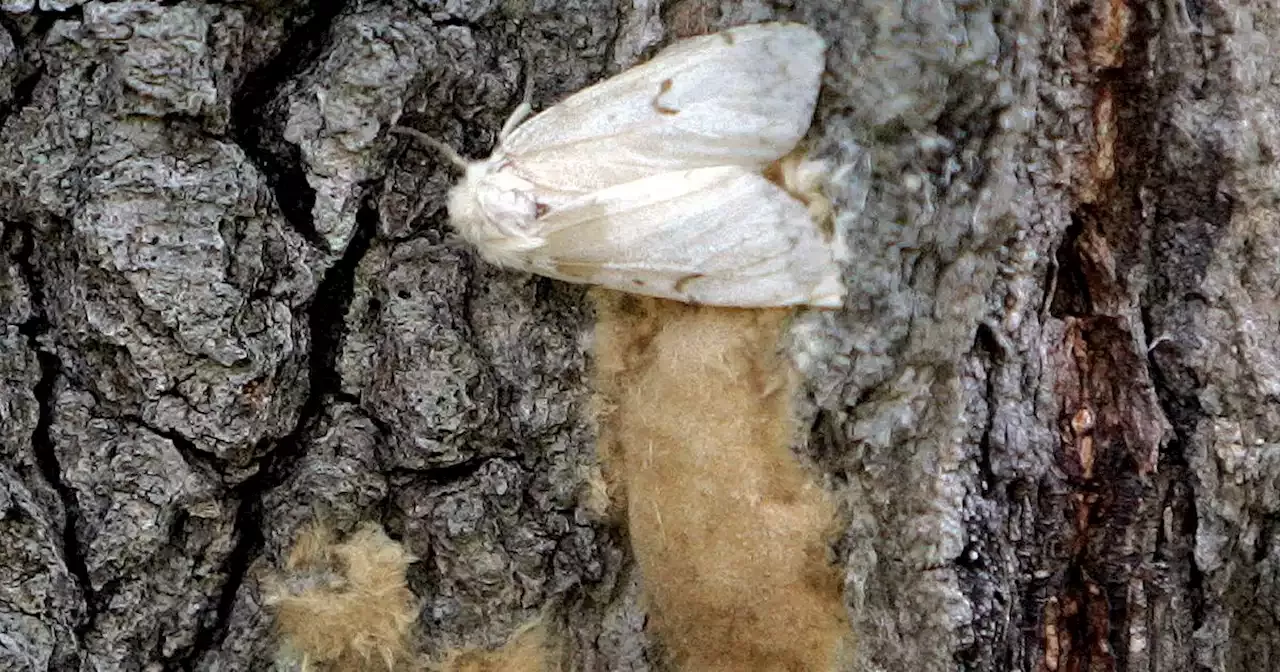A female Lymantria dispar moth -- more commonly known as a spongy moth -- lays her eggs on the trunk of a tree. One egg mass can produce as many as 600 to 1,000 caterpillars, each of which can eat as much as 11 square feet of foliage on a tree.
The moths, also known as spongy moths, eat a lot of leaves but spit out a lot as well, causing damage to the entire tree, he said. Plus, they defecate everywhere, he said.The moths lay 600 to 1,000 eggs in each mass they leave behind, he added. He’s found at least 20 egg masses on his property so far, and is worried about what this summer will be like, he said.
“It was unbelievable when the caterpillars turned into moths. You couldn’t even go outside. We watched trees falling apart,” shesaid. “It was unbelievable just trying to spend a minute outside when these moths came last year. I mean, not a few, but hundreds of thousands of them.Trustees tentatively approved a $52,440 contract with Hendrickson Flying Service Inc. to do two aerial treatments, which the village will fund with capital fund surplus cash.
Spongy moth caterpillars — formerly known as gypsy moths — are considered a public nuisance in areas where there are a lot of oak trees, according to the Illinois Department of Agriculture’s website. The insects can grow as large as two inches long and can eat up to 11 square feet of foliage from early May to June.
